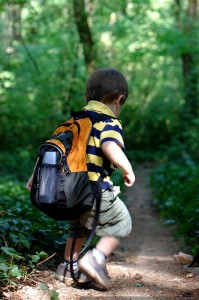 It is not a secret that heavy back (BP) packs for school children are the leading cause of lower back and shoulder pain. I have seen too many children in my almost ten years of my practice suffering from this problem unnecessary. About 40,000,000 students go to school every day. It is crucial that every child carries their schoolpacks properly in order to avoid neck, lower back and shoulder pain.
It is not a secret that heavy back (BP) packs for school children are the leading cause of lower back and shoulder pain. I have seen too many children in my almost ten years of my practice suffering from this problem unnecessary. About 40,000,000 students go to school every day. It is crucial that every child carries their schoolpacks properly in order to avoid neck, lower back and shoulder pain.
Make sure the backpack is the right size for your child. The proper size is equal to 75% of your child’s back, meaning the space between the waste and the shoulder blades.
* A child’s back pack weight should never exceed 15% of their body weight according to The Congress of Chiropractic State Association. So this little chart should be helpful.
50 pound child carrying copacity should be no more than 7.5 pounds
80 pound child carrying copacity should be no more than 12 pounds
100 pound child carrying copacity should be no more than 15 pounds
130 pound child carrying copacity should be no more than 19.5 pounds
150 pound child carrying copacity should be no more than 22.5 pounds
* Choose a backpack with padded shoulder straps that sit on both shoulders. BP with one strap such as messenger bags distribute all the weight on one shoulder instead of evenly on both shoulders. Also, bak pack without padded shoulder straps can cause pressure on the nerves that surround the child’s armpits.
Safety tips on how to avoid backpack injuries
- Wear both shoulder straps evenly to properly distribute BP weight.
- Get the correct size BP for your child.
- The BP should not extend below the lower back. Bigger is not better.
- Lighten the load and put the heaviest items in the BP first keeping them the closest to the body.
- Lift the BP with your legs and not with your back and place it on one shoulder strap at a time.
- Do not leave BP on the floor to avoid someone tripping on them.
- Choose a quality BP that has wide well-cushioned shoulder straps with a lumbar support/padding.
- Talk to teachers about reducing the need to bring home textbooks or if at all possible have an extra set for home use.
- Bend at the knees.
- Using both of your hands, check the weight of the BP.
- Never sling the BP onto one shoulder and avoid swinging the BP.
- Use both shoulder straps at all times. Make them snug but not too tight. Carrying on one shoulder can cause long-term neck, shoulder, back, and postural problems.
- Use the stabilizing waste strap if the BP has one present.
- Look for signs that BP is poorly fitted or overloaded on a daily basis. A couple signs that the BP is overloaded or not being worn properly is pain, red marks from the straps, or poor posture.
Being a Safe Backpack Advocate
School’s authorities and children’s parents must work together in resolving heavy BP issue. The following things can be done by school’s authorities:
- allowing students more time in between classes to use lockers
- purchasing paperback books
- implementing school education programs about safe backpack use
- purchasing books on CD-ROM or putting some curriculum on the school’s website, when possible
Adjustment of the backpack would be necessary if one of the following things happened:
- Your child struggles to get the BP on or off have back pain and lean forward to carry the BP
- If your child has back pain or numbness or weakness in the arms or legs, talk to your family doctor, chiropractor or physical therapist.
Some Facts were taken from The Founders of Backpack Safety America International TM. Visit them at www.backpacksafe.com
The International Chiropractic Pediatric Association (ICPA) endorses the use of Air Pack brand backpacks which are available at www.airpacks.com
Please Leave some comments with your favorite back to school story!